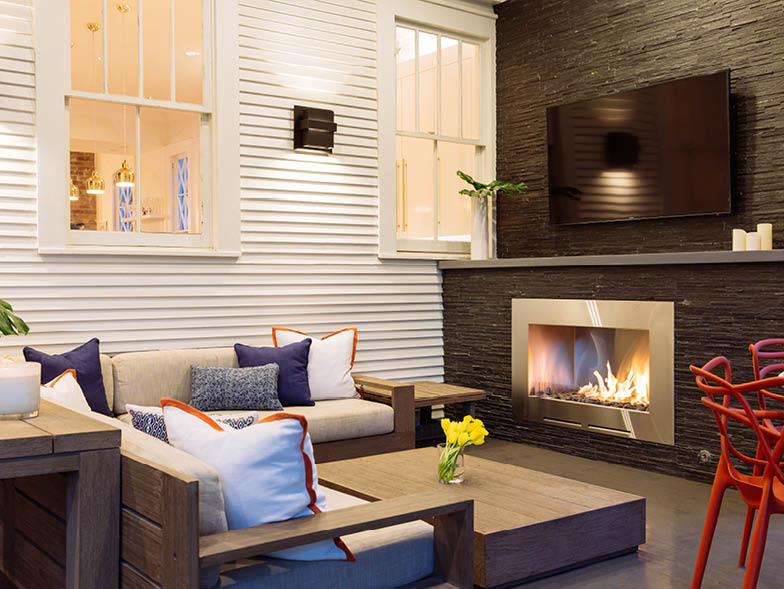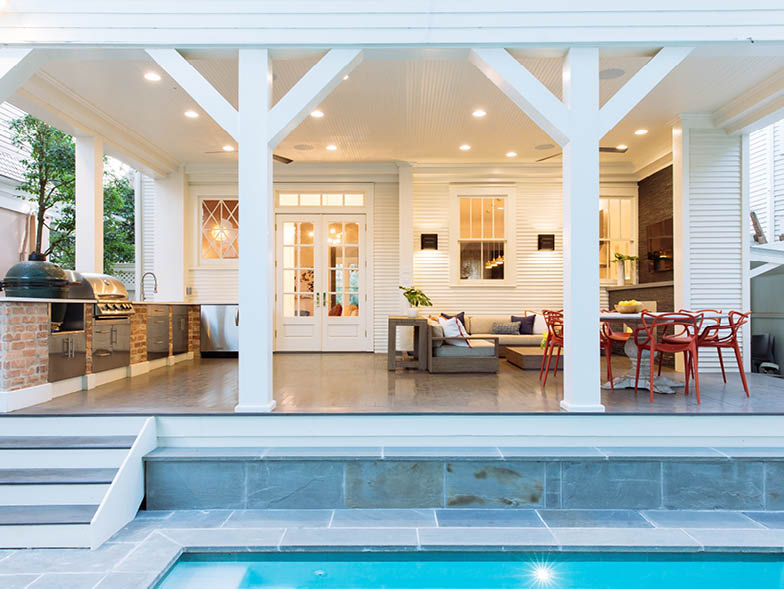East Meets West: Olivia Erwin Interiors
As far as style goes, it is hard to place designer Olivia Erwin Rosenthal into a single category. Having received her master’s in interior design from UCLA and living and working on the West Coast and the Gulf Coast, Erwin has been influenced by some of the most exciting environments America has to offer, and she’s only just begun to leave her mark.
What’s your earliest design memory? Is this something you have always had a passion for?
I grew up in the country, surrounded by vast amounts of space. All that I had were my fashion magazines, an imagination, and my mom’s closet full of clothes. I spent a lot of time as a kid playing with design and style, and over time that translated into designing whole spaces.
My grandfather was also a sea captain who navigated around the world many times, so I was always surrounded by rooms that were full of antique artifacts from Asia, Africa, and Europe. The juxtaposition of being in the country surrounded by all of these beautiful, unique objects was a constant reminder of how big the world is.

Did you always picture yourself pursuing a creative career, or were there other paths you followed before jumping into design?
My undergraduate degree is in journalism and public relations, which brought me to Manhattan, where I worked in publishing for a while. Before that, I worked for a corporate travel company and was able to fly all around the world. So moving from New York to Los Angeles to dive into something else I had a passion for—design—just made sense to me.
You moved to Los Angeles and pursued a master’s degree in interior design from UCLA. What about the city and the school influenced your development as a designer?
Living in Los Angeles, you can wake up with an idea and find exactly what you’re looking for the same day. It’s all about access here, whether it’s for school or work, and if you can’t find something, you can typically have it made right down the street.
It’s also a great city for the influence it has—culturally and aesthetically. It’s very eclectic, and the people are eclectic as well. You end up having to design around a lot of different styles and tastes, which helps evolve your personal style.
How has your personal style evolved since those early moments of your career? How have your experiences over the years impacted your choices?
Like a lot of people, all of my focus was on understanding the basics of working a space when I first started out. I was so much more concentrated on fundamentals like understanding flow, lines, volume, proportion, and composition—the true design side of the business. From there, style is an ever-evolving thing that you build onto the founding principles, depending on the client’s vision.
Working at the design firm Marmol Radziner had a big influence on me early on, and every client there added something new. The company has mastered modernism, so what I learned there is invaluable. They’re also very organized and procedural, the projects are quite large, and the clients are quite particular. You learn to handle all of the complex aspects quickly, and you’re held to a very high standard, so you can’t help but take that with you.
What made you decide to leave the firm to open Olivia Erwin Interiors?
I had my first daughter while I was still working at Marmol Radziner, and at the time I really wanted to focus on her, so I ended up leaving on great terms to concentrate on being a mother. Once everything settled down, I knew it was time to get back into design, but I still wanted a flexible schedule so I could be with her as much as possible.

What made you decide to leave the firm to open Olivia Erwin Interiors?
I had my first daughter while I was still working at Marmol Radziner, and at the time I really wanted to focus on her, so I ended up leaving on great terms to concentrate on being a mother. Once everything settled down, I knew it was time to get back into design, but I still wanted a flexible schedule so I could be with her as much as possible.
How were you able to adjust to running your own firm after working for such a large one? What is your favorite part about calling the shots?
Running my own firm is definitely more work overall, but there is something special about being responsible for all aspects of the projects—the good and the bad. It depends on the person, I think, but working for a firm can be satisfying in other ways.
I really enjoy the trust and the relationships that I’m able to build with my clients, though. It’s a special feeling to come into their lives and work with them to improve their spaces. It’s an intimate thing, and I appreciate what it means to them.
You now split your time between Los Angeles and New Orleans. Why New Orleans?
I grew up in south Louisiana, and New Orleans is a very aesthetically rich city with a very special culture. There really isn’t another city like it in the United States. My family is very well anchored in Los Angeles, but after having our first daughter, we decided to roll the dice on a new city while keeping a flexible commute back and forth. At that time, New Orleans was still digging out from Hurricane Katrina, but we hedged that it would come back to life in a meaningful way—and it has. It’s amazing to see how much the city has transformed since we moved here.

One of the most exciting projects you’ve done since moving to New Orleans is the Nashville residence, which incorporates traditional style with modern features. Is this aesthetic common in the city?
I generally work to find the right tension between these influences. Traditional can often become too busy because everything is so ornate, so it can help to combat that with clean lines, flat planes, and simple finishes. On the other hand, modern can feel too sterile, so it’s good to layer in more visually ornate details to give the space some life. When you apply a modern foundation to projects in New Orleans, layering in classic cues, you end up with this nice tension that makes for a more interesting space.
There is a lot of additional seating built into the design, especially in the kitchen. Was this a design choice?
This feature was more for additional seating and storage purposes. The client loves to entertain, hence the bar in between the dining area and kitchen.
You chose to keep the walls completely white for this particular project, but you brought in color with furniture, fixtures, and other motifs. Do you often like to let the decor speak for itself?
It depends on the project. This client really wanted a clean, simple palette with color coming in from various decorative objects. White walls work well as a foundation to set the tone against the traditional architectural elements of the house.

Is any combination of textures or colors off-limits in your designs? Is there any particular style or blend of styles you would never use?
Nothing is off-limits as long as you can make it work. I don’t really like to have set dos and don’ts when it comes to design, because I believe setting limits often hinders creativity. Oftentimes, it’s the overlooked combination or simple accidents that create the most compelling direction for a space.
What do you find most rewarding about creating a client’s dream space?
I really enjoy the relationships that grow out of my work. When you get close to someone or a family, and they bring you into their lives to help them create something unique and functional to live in, there’s really nothing like it. It’s a very exceptional experience.
For more info, visit oliviaerwin.com






















